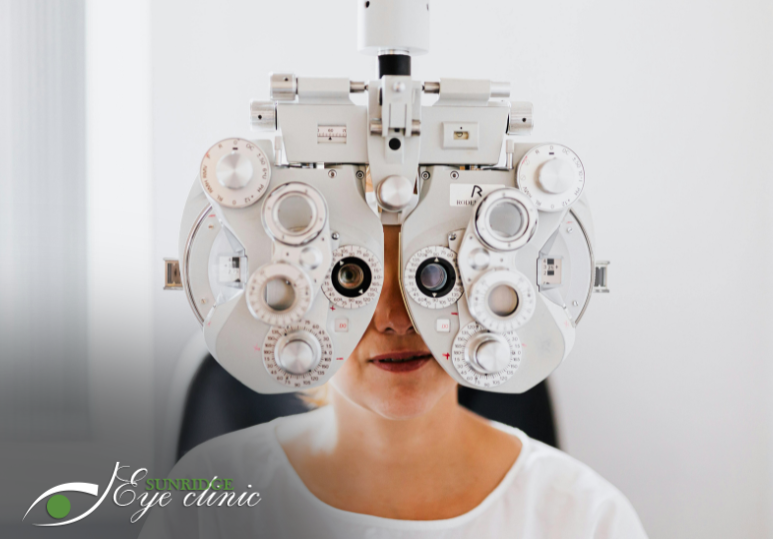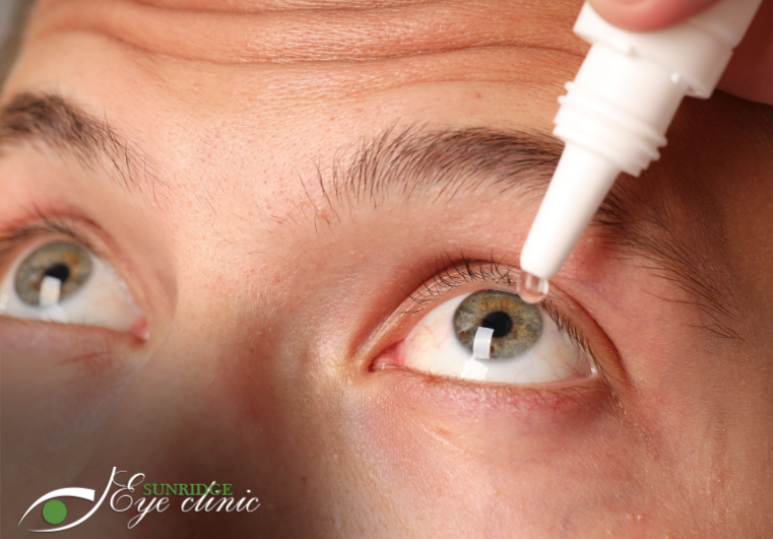In our last month’s post about Age-Related Macular Degeneration, we discussed the importance of eye exams in detecting this eye condition & preventing vision loss. Here’s how our qualified optometrists can help you manage AMD and protect your vision.
Age-related macular degeneration (AMD) is a common eye condition and a leading cause of vision loss in adults over the age of 50 years. Most often detected through an eye exam, AMD is characterized by damage to the macula, the small area near the centre of the retina responsible for central vision.
Although there may be no symptoms in the early stages of AMD, signs of a damaged macula include:
- dark, blurry areas in the centre of vision
- diminished colour perception
- difficulty doing everyday activities such as reading and watching television
- difficulty recognising faces
- straight lines (eg. door frames or steps) appear distorted
Comprehensive Eye Exams & AMD Management in Calgary
At Sunridge Eye Clinic, our professional Calgary eye doctors are dedicated to protecting your eye health. Through regular eye exams, AMD can be detected and managed early to prevent any harmful effects to your vision.
Want to know more?
How to Manage and Treat Age-Related Macular Degeneration
Before understanding how to treat/manage AMD, it’s important to understand that there are two main forms of this condition: Dry AMD and Wet AMD. How you go about management and treatment will depend on the type you have.
Dry vs Wet AMD
DRY: About 90% of people with AMD will have the dry form, which typically doesn’t present with any symptoms. That’s why it’s important to get regular eye exams, especially as you get older.
Tip: It is often recommended that people over the age of 65 go for comprehensive checkups at least every 1-2 years, even if they have no symptoms or changes in vision.
WET: For about 10% of people with dry AMD, this progresses to wet AMD, when abnormal blood vessels form on the macula and affect your central vision. These vessels can leak fluid which results in an inability to see clearly and can make it difficult to carry out everyday activities such as:
- watching TV
- reading
- recognising peoples faces
- driving
Managing and Monitoring Dry AMD
Even though dry AMD typically doesn’t cause any symptoms, it still needs to be managed. If you have been diagnosed with this condition, here are some ways to manage it:
- See your eye doctor regularly. Visiting your optometrist every six months for a comprehensive eye exam can help you stay on top of your condition.
- Monitor your vision changes at home. It’s important to keep an eye out for any changes in your vision or development of AMD symptoms. Talk to your eye doctor about using an Amsler grid at least once a week at home.
- Stop smoking. If you smoke, one of the many reasons to quit is that it can worsen AMD. Cigarette smoking is a proven risk factor both for developing AMD and having the condition progress.
- Take eye vitamins. If you are suffering from Dry AMD, talk to your eye doctor about whether eye vitamins can help your condition and if so, which formulation would be best for you to take.
Treating and Managing Wet AMD
With Wet AMD, the focus shifts to actively treating the condition, not just monitoring it. Here are some effective steps to take when you have wet AMD:
- Get regular treatment. Wet AMD is often treated with anti-vascular endothelial growth factor therapy. This is injected into the eye to keep new blood vessels from forming and creating leakage, thus preventing further vision loss.
- Keep taking eye vitamins if only one of your eyes has wet AMD. Wet AMD usually first develops in one eye. If your other eye still has dry AMD, it’s important to keep taking your eye vitamins to reduce the likelihood that wet AMD will develop.
- Make the most of low vision aids. If your central vision has already been affected by wet AMD, there are many ways to adapt. Talk to your eye doctor about low-vision rehabilitation, tools such as magnifiers to help you read, and other helpful adjustments you can make in your home to make seeing contrast easier.
Call Today
To find out more about how our qualified optometrists can help you treat and/or manage vision conditions such as AMD, glaucoma, cataracts, and diabetic retinopathy, contact our eye clinic today at 403-280-7518 or book an eye exam.





